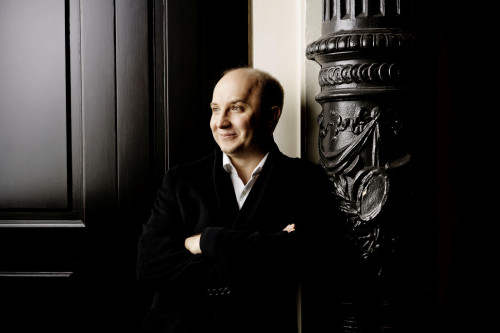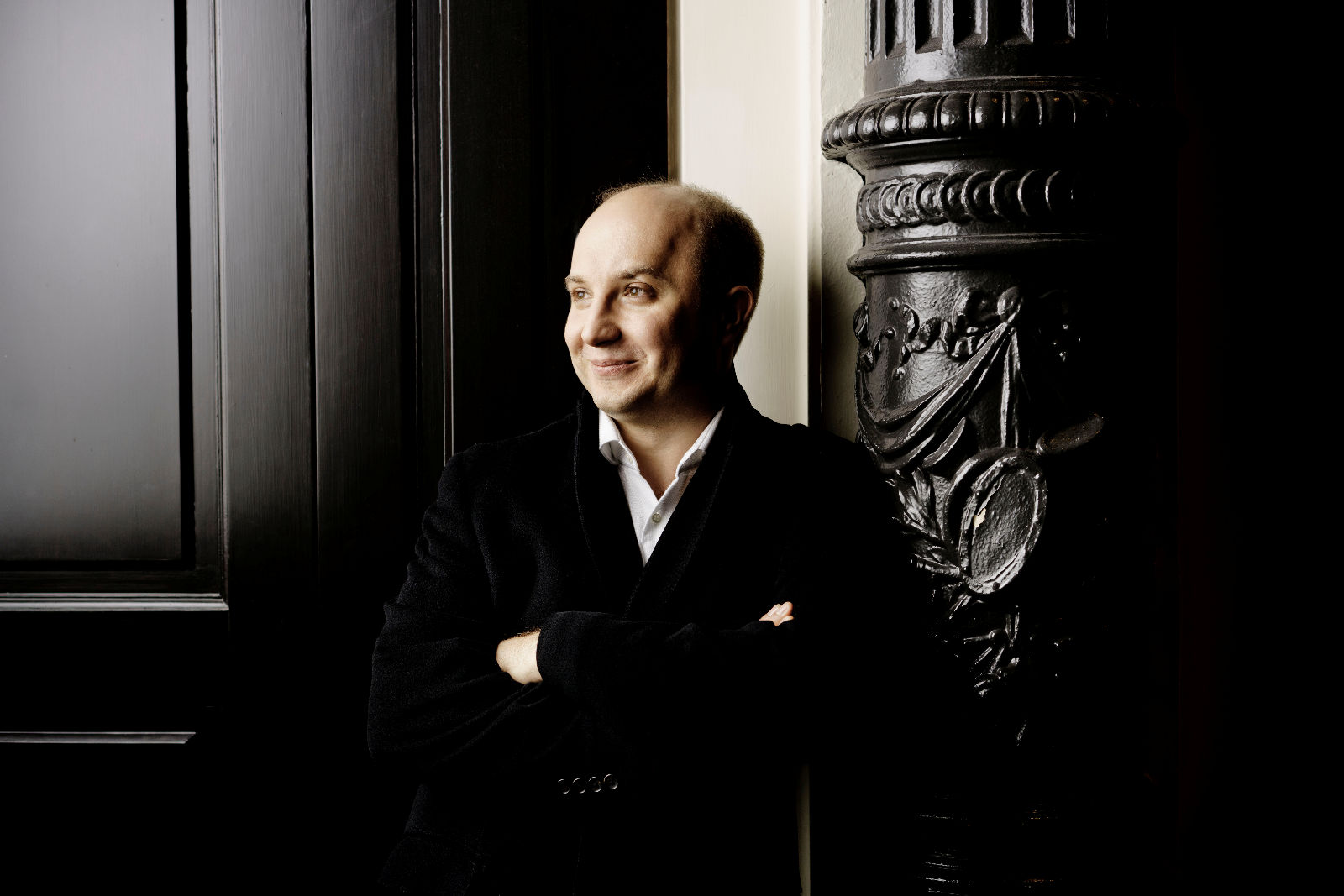 Canada Bach/Busoni, Haydn, Chopin, Scriabin, Rachmaninoff: Alexander Gavrylyuk (piano), Vancouver Playhouse, Vancouver, 16.5.2018. (GN)
Canada Bach/Busoni, Haydn, Chopin, Scriabin, Rachmaninoff: Alexander Gavrylyuk (piano), Vancouver Playhouse, Vancouver, 16.5.2018. (GN)

Bach/Busoni – Toccata and Fugue in D minor
Haydn – Sonata No.47 in B minor Hob.XVI:32
Chopin – Etudes Op.10, Nos.3, 8, 9, 10, 11, 12
Scriabin – Sonata No.5
Rachmaninoff – Preludes (Op.23 Nos.1 and 5; Op.32 No.12); Piano Sonata No.2 (1931)
Alexander Gavrylyuk’s excellent concerto performances have always been distinguished by strong emotional and intellectual involvement, mingling with a sometimes Horowitz-like virtuosity and fire. Nonetheless, they are still relatively relaxed events compared with his solo recitals. I had forgotten the unique intensity level that this 34-year-old Ukrainian/Australian pianist achieved in his 2013 Wigmore Hall debut – when he played Pictures at an Exhibition – but was soon reminded of it here. Gavrylyuk clearly lives every moment of his solo experiences, and communicates so viscerally and with so much immediacy (and indeed with so much patent honesty) that the listener can hardly avoid being taken into his world. Perhaps the only downside to the ‘Gavrylyuk Experience’ is that it one might come away from a recital so consumed by the pianist’s tonal thunder and riveting bravura that the thoughtfulness and sensitivity of his playing are missed. While thunder and bravura were never far away here, the concert explored a useful balance of styles, mixing Bach, Haydn and Chopin with Scriabin and Rachmaninoff – and it added up to great effect.
Few pianists could strike the keys more forcefully at the beginning and end of the Bach/Busoni Toccata and Fugue in D minor, but it was Gavrylyuk’s lovely line and suspension throughout the Fugue that gave this performance real stature and purpose. It also revealed how much the pianist’s training assimilates the virtues (and delights) of classical counterpoint, producing an even balance over the hands and allowing clarity and rhythmic sophistication to secure a natural architecture and momentum. Perhaps this balance might be identified with Marc-André Hamelin too, though Gavrylyuk has a weightier tone and pedals more readily. The result is a strongly cohesive tonal output, favouring lucidity and point more than cantabile expansion on top, and strong definition and animation on the bottom.
These attributes easily account for Gavrylyuk’s success in Haydn’s Sonata No.47, where fine doses of witty counterpoint were wedded to architectural strength. A playful perkiness in the right-hand phrasing dominated the first movement’s line, taken at the marked moderato, but there was always a keen awareness of structural transitions and varieties of colour. The pianist’s sense of balance and contrapuntal rigour continued to pay dividends in the rest of the work: the Menuetto and Trio were delivered with rhythmic acuity and a fine dramatic sense, while the delightfully frothy finale was taken home with just the right pacing and enthusiasm.
The 6 Etudes from Chopin’s Op.10 came off somewhat weightier than normal, always tonally integrated but with less obvious sparkle and lyrical zest in the right-hand figurations and more perceptive detailing in the left. No.3 started things off with considerable melancholic feeling and an interesting sense of rusticity – quite affecting. This posture deepened as he moved to the greater scale of Nos.8, 9 and 10, and one could not help but note a greater tonal density, and even some tinges of Rachmaninoff’s more heroic melancholy. Such features might be regarded as insufficiently fragile or quicksilver for Chopin, yet they yielded a fresh slant on rubato and detailing, and the readings had obvious commitment. This approach seemed as defensible as those that inflate Chopin to a Lisztian amplitude. Naturally, all the power and bravura force, coupled with the scintillating left hand protestations, came home in the famous ‘Revolutionary’ Etude (No.12).
The ‘white heat’ portion of the concert began in earnest with Scriabin and finished with Rachmaninoff. Scriabin’s 11-minute Sonata No.5 is a popular entry point into his ten sonatas: it is one of the key transition pieces to the composer’s world of atonality and a freer (and often more eccentric) expression. Gavrylyuk has already recorded it for Piano Classics. Here he summoned a fine command of its twisting sensual lines, bursts of burning energy and fitful rhapsodic motion, providing a sonically richer and more molten performance than many. What was distinctive is how strongly the pianist contrasted the episodes of abandoned frenzy with the very soft ‘languido’ moments of stillness and contemplation. In the latter, the notes often floated as if time truly stood still – as transient cells of colour suspended in ether. This approach seemed to suggest that the unity in this work derives less from an integrating rhapsodic flow and more from a continuing collision of a world of tangible struggle with one of disembodied wonder, affirming the work’s mystical pretense.
Rachmaninoff is clearly the artist’s bread and butter, as emphatically noted in the complete concerto cycle he gave here in 2014 (review). Gavrylyuk has a particularly fine perception of the emotional nerve ends and the volatility in the composer’s makeup – from his tender innocence, to the depths of his consuming struggle, to his triumphal conquests of his own doubts. Here the pianist’s control of the rhapsodic/lyrical line combines superbly with his dramatic power and weight. Three lovingly-wrought Preludes offered the warmup to the composer’s Sonata No.2, and I was particularly taken by the beauty and sense of expectancy in Op.32 No.12 and the wonderful rhythmic snap in Op.23 No.5. The opening of the Sonata (second edition, 1931) was striking in its larger-than-life fury, relaxing into a lovely innocence one noticed again later in the work. Here the variety of tonal shadings and lyrical pulse were as impressive as the moments of pianistic weight. The Lento found all the bittersweet melancholy that one could want – beautifully etched – while the recurring triplets of the finale were taken home with the greatest insistence and indescribable power.
There is no doubt that Gavrylyuk saw this sonata ‘whole’, and his riveting grip brought down the house triumphantly, just like the composer might have wanted. This was the ‘Gavrylyuk Experience’ at its finest. And then to the encores: first, a most touching and fragrant Vocalise in Zoltan Kocsis’ transcription; then a transcendentally virtuosic and bizarrely entertaining set of variations on Mozart’s ‘Rondo alla Turca’ in an arrangement by Arcadi Volodos that seemingly requires 15 fingers. This recital will not be forgotten quickly.
I continue my plea for some recording company take on Gavrylyuk’s cycle of Rachmaninoff concertos and, for that matter, his unique Tchaikovsky concerto (review). He will be performing the latter with the Philharmonia in London soon. I also provide a link to my earlier interview with the artist discussing the Rachmaninoff concertos (interview).
Geoffrey Newman
Previously published in a slightly different form on http://www.vanclassicalmusic.com.
